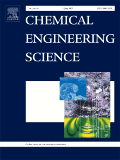
CHEMICAL ENGINEERING SCIENCE
Scope & Guideline
Pioneering Research in Chemical Processes and Applications
Introduction
Aims and Scopes
- Chemical Process Engineering:
Research on the design, optimization, and control of chemical processes, including batch and continuous operations, with a strong focus on process intensification and sustainability. - Reaction Engineering:
Investigation of reaction kinetics, mechanisms, and reactor design, particularly for catalytic processes, including the development of new catalysts and their performance in various reactions. - Separation Processes:
Studies involving mass transfer operations such as distillation, absorption, extraction, and membrane processes, aimed at enhancing efficiency and selectivity in separation techniques. - Transport Phenomena:
Research on the behavior of momentum, heat, and mass transfer in various systems, including fluid dynamics in reactors, microfluidics, and complex multiphase flows. - Sustainable Chemical Engineering:
Focus on green chemistry and engineering principles, including waste minimization, resource recovery, and the development of renewable energy technologies. - Materials Science:
Exploration of novel materials for applications in catalysis, energy storage, and environmental remediation, with an emphasis on structure-property relationships. - Machine Learning and Data-Driven Approaches:
Application of machine learning techniques to model complex chemical processes, optimize operations, and predict outcomes based on experimental data.
Trending and Emerging
- Advanced Materials for Catalysis:
Research is increasingly focusing on the development of advanced materials, such as metal-organic frameworks (MOFs) and nanostructured catalysts, which enhance catalytic performance and selectivity. - Sustainable and Green Chemistry:
There is a growing trend towards sustainable practices in chemical engineering, including the development of green solvents, waste valorization processes, and methods that minimize environmental impacts. - Integration of Machine Learning and AI:
The integration of machine learning and artificial intelligence in chemical engineering research is on the rise, with applications in process optimization, predictive modeling, and real-time monitoring. - Microfluidics and Miniaturized Systems:
The use of microfluidic systems for various applications, including reaction engineering and material synthesis, is gaining momentum, reflecting a trend towards miniaturization and increased efficiency. - Environmental Remediation Technologies:
Research focusing on innovative technologies for environmental remediation, including advanced oxidation processes and the use of bio-based adsorbents, is becoming more prominent. - CO2 Utilization and Carbon Capture:
With growing concerns over climate change, there is a significant increase in research aimed at CO2 capture technologies and its conversion to valuable products.
Declining or Waning
- Traditional Chemical Process Simulation:
There has been a noticeable decline in papers focused solely on traditional simulation methods without integrating advanced data-driven or machine learning techniques. The field is moving towards more hybrid approaches that combine traditional methods with modern computational techniques. - Basic Unit Operations:
Research specifically centered on traditional unit operations (e.g., simple distillation, basic heat exchangers) seems to be less frequent, as the community shifts towards complex, integrated systems and novel applications. - Conventional Catalyst Development:
While catalyst development remains a vital area, there is a noticeable decline in studies focused on conventional catalysts without innovative modifications or new approaches, such as the integration of nanomaterials or hybrid systems. - Single-Phase Flow Dynamics:
Research on single-phase flow dynamics, particularly in simpler systems, is becoming less prominent, with a shift towards studying multiphase flows and their complexities.
Similar Journals

ACS Engineering Au
Unleashing the Potential of Chemistry in EngineeringACS Engineering Au, published by the American Chemical Society, is an esteemed open-access journal dedicated to advancements in the field of engineering, encompassing a wide range of interdisciplinary studies that merge principles of chemistry with cutting-edge engineering practices. With an E-ISSN of 2694-2488, this journal aims to disseminate significant and innovative research findings that contribute to the development of sustainable technologies and solutions in various engineering domains. Since becoming an open-access journal in 2021, it has fostered greater accessibility and visibility for researchers and practitioners alike, encouraging collaboration and knowledge sharing across the global community. By providing a platform for high-quality research, ACS Engineering Au plays a pivotal role in shaping the future of engineering disciplines, making it an essential resource for academics, industry professionals, and students who are eager to stay at the forefront of engineering advancements.
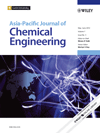
Asia-Pacific Journal of Chemical Engineering
Exploring Cutting-Edge Research in Chemical Engineering and Beyond.The Asia-Pacific Journal of Chemical Engineering, published by WILEY, serves as a vital forum for the dissemination of innovative research in the interdisciplinary domains of chemical engineering, renewable energy, sustainability, and waste management. Established in 2006, this esteemed journal has achieved a notable impact factor that reflects its commitment to advancing knowledge and practices within the chemical engineering community. With its Q3 category rankings across various fields, including Chemical Engineering (Miscellaneous), Renewable Energy, Sustainability and the Environment, and Waste Management and Disposal, the journal holds a significant position among its peers, assuring readers of quality and relevance in published content. Although it does not offer Open Access options, the Asia-Pacific Journal of Chemical Engineering remains an essential resource for researchers, professionals, and students aiming to stay at the forefront of innovations affecting the Asia-Pacific region and beyond. The journal's broad scope covers diverse topics, making it an integral part of the academic landscape from 2006 to 2024.
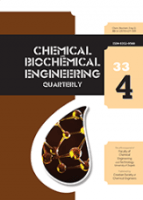
CHEMICAL AND BIOCHEMICAL ENGINEERING QUARTERLY
Bridging Academia and Industry in Chemical InnovationsCHEMICAL AND BIOCHEMICAL ENGINEERING QUARTERLY, published by the Croatian Society of Chemical Engineering Technology, is a distinguished open-access journal that has been providing a platform for the dissemination of innovative research since its inception in 1987. With a focus on the fields of biochemistry and chemical engineering, this quarterly journal addresses a wide array of topics, including process chemistry and technology, making significant contributions to both academia and industry. Despite its current positioning in the Q4 category for biochemistry and Q3 for miscellaneous chemistry and process chemistry in 2023, the journal continues to strive for greater impact, catering to researchers, professionals, and students alike. Its open-access model, in place since 2001, ensures that cutting-edge research is accessible to a broad audience, fostering collaboration and knowledge sharing within the scientific community. By promoting high-quality research and providing insights into the latest advancements, Chemical and Biochemical Engineering Quarterly remains an essential resource for those involved in the chemical and biochemical engineering disciplines.
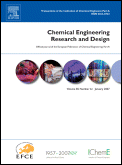
CHEMICAL ENGINEERING RESEARCH & DESIGN
Unveiling New Horizons in Chemical Engineering.CHEMICAL ENGINEERING RESEARCH & DESIGN is a prestigious journal that has been at the forefront of dissemination in the fields of chemical engineering and general chemistry since its inception in 1983. Published by Elsevier, the journal features a rich array of research articles that contribute to both theoretical and practical advancements in the discipline. With an impact factor that positions it strongly within the Q2 quartile for both Chemical Engineering and Chemistry categories, it occupies an esteemed place in the academic community, being ranked #77 out of 273 in Chemical Engineering and #111 out of 408 in General Chemistry on Scopus. Researchers and professionals will find it an invaluable resource for cutting-edge research and innovative methodologies that shape the future of chemical engineering applications. While the journal does not currently offer open access, it remains accessible through institutional subscriptions, ensuring that important findings continue to reach a broad audience. With a scope that is poised to expand through 2024, the journal aims to foster collaboration and knowledge sharing, supporting the continuous evolution of the field.
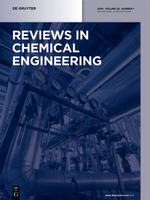
REVIEWS IN CHEMICAL ENGINEERING
Transforming Ideas into Engineering Solutions.REVIEWS IN CHEMICAL ENGINEERING, published by Walter de Gruyter GmbH, is a premier journal that delivers cutting-edge insights and comprehensive reviews in the field of chemical engineering. Established as an eminent resource since 1982, this journal is committed to advancing knowledge and fostering innovation in various domains of chemical engineering, including process design, materials, and environmental considerations. With an impressive Q1 ranking in the 2023 Scopus category for Chemical Engineering and a commendable 20th position out of 273 journals, it is recognized for its rigorous peer-review process and high-impact contributions. Although it operates under a subscription model, the journal remains a vital platform for researchers and professionals aiming to stay at the forefront of technological advancements and scholarly discourse in chemical engineering. With a focus on interdisciplinary applications and real-world relevance, REVIEWS IN CHEMICAL ENGINEERING is an indispensable resource for academics, industry professionals, and students dedicated to excellence in this field.
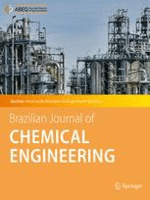
BRAZILIAN JOURNAL OF CHEMICAL ENGINEERING
Innovating Solutions for a Sustainable FutureThe Brazilian Journal of Chemical Engineering (ISSN: 0104-6632, E-ISSN: 1678-4383), published by Springer Heidelberg, stands as a prominent open-access journal dedicated to disseminating innovative research and advancements in chemical engineering since its inception in 1997. With a commitment to enhancing knowledge exchange within the field, this journal is indexed in Scopus, earning a respectable Q3 rank in the category of General Chemical Engineering as of 2023. It provides a platform for researchers, professionals, and students to explore a diverse range of topics, fostering collaboration and innovation from its base in Brazil. The journal has converged its operations from 1995 and will continue to push the boundaries of chemical engineering research until 2024 and beyond. As a critical resource for up-to-date methodologies and emerging trends, the Brazilian Journal of Chemical Engineering is essential for those aiming to make impactful contributions in this dynamic and evolving field.
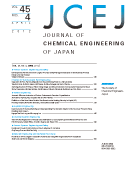
JOURNAL OF CHEMICAL ENGINEERING OF JAPAN
Exploring New Frontiers in Chemical EngineeringJOURNAL OF CHEMICAL ENGINEERING OF JAPAN is a distinguished academic publication in the field of chemical engineering and chemistry, published by Taylor & Francis Ltd. With its ISSN 0021-9592 and E-ISSN 1881-1299, this journal has been a vital resource for researchers and practitioners since its inception in 1968 and continues to provide essential insights and advancements through 2024. The journal operates under an Open Access model as of 2023, promoting wider dissemination of research findings and encouraging collaboration within the global scientific community. Currently categorized in the Q4 quartile for both Chemical Engineering and Chemistry (miscellaneous) in 2023, it ranks within the lower percentiles of its respective fields, offering a platform for emerging scholars to publish their work and gain visibility. As part of Japan's academic landscape, it addresses numerous aspects of chemical engineering, fostering innovation and technical development that contribute to the industry's growth. Engaging with this journal is paramount for those looking to stay informed on the latest research trends and applications in chemical processes.

CHEMIE INGENIEUR TECHNIK
Exploring the Intersection of Chemistry and Engineering.CHEMIE INGENIEUR TECHNIK, published by WILEY-V C H VERLAG GMBH, stands as a significant academic journal in the fields of Chemical Engineering, Chemistry, and Industrial and Manufacturing Engineering. With an ISSN of 0009-286X and an E-ISSN of 1522-2640, this esteemed journal has been contributing to the body of knowledge since 1949 and plans to continue its legacy until 2024. Notably, the journal holds a Q2 quartile ranking in 2023 across various categories, illustrating its recognized impact and relevance within the scientific community, with Scopus ranks indicating it falls within the top 60th to 51st percentiles of its respective fields. Although currently not open access, CHEMIE INGENIEUR TECHNIK provides readers with comprehensive insights into contemporary research, technological advancements, and practical applications, making it an essential resource for researchers, professionals, and students who are keen to stay abreast of developments in chemical processes and engineering advancements.

Chemical Engineering Journal Advances
Empowering Global Collaboration in Chemical Engineering Advancements.Chemical Engineering Journal Advances, published by Elsevier, is a premier open-access journal dedicated to advancing research and innovation in the field of chemical engineering. With its inception in 2020, the journal has quickly established itself as a key player in disseminating high-quality, peer-reviewed articles, boasting an impressive Q1 ranking in Chemical Engineering and related disciplines for 2023. The journal covers a broad spectrum of topics, including industrial processes, environmental chemistry, and innovative manufacturing techniques, making it essential reading for researchers and professionals aiming to stay at the forefront of chemical engineering advancements. With its commitment to open access, Chemical Engineering Journal Advances ensures that groundbreaking research is readily available to the global scientific community, fostering collaboration and knowledge exchange. Situated in the Netherlands, the journal supports its authors with a robust platform for impactful research dissemination, highlighted by a solid position in the Scopus ranks, indicating its influence and relevance in the field.

Frontiers of Chemical Science and Engineering
Elevating Chemical Science to New HeightsFrontiers of Chemical Science and Engineering is an esteemed journal published by SPRINGER, dedicated to advancing the rapidly evolving domain of chemical engineering. Located in New York, USA, this journal provides a vibrant platform for disseminating groundbreaking research and innovative methodologies in the field. With an impressive Q1 ranking in Chemical Engineering and a Scopus ranking of 54 out of 273, it occupies a prominent position, reflecting its high impact and relevance among academic circles. Since its inception in 2011, it has fostered interdisciplinary collaboration, encompassing diverse topics such as process engineering, environmental sustainability, and nanotechnology, making it a vital resource for researchers, professionals, and students alike. The journal's open access policy further enhances accessibility, ensuring that cutting-edge research is readily available to a global audience. As the field continues to evolve, contributions to Frontiers of Chemical Science and Engineering play an essential role in shaping future advancements and empowering the next generation of engineers.